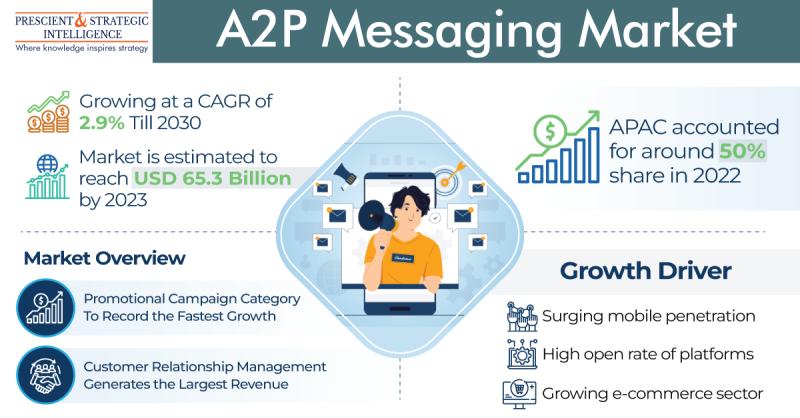A Complete Guide to A2P (Application-to-Person) Messaging
 Isabella Turner
Isabella Turner
A2P is a kind of messaging where brands send messages using a software app to mobile users. Also known as enterprise SMS or business SMS, it enables brands to send large sizes of automated, important business messages to consumers.
Sectors utilizing A2P calling and A2P messages include BFSI, healthcare, travel & hospitality, retail & e-commerce, media & entertainment, telecommunication, and government.
Some of the most extensively utilized forms of A2P messages include transactional SMS like bank alerts, appointment reminders, shipping updates, order confirmation, and advertising messages, including sale announcements or discount codes.
Moreover, OTT companies are increasingly accepting of A2P SMS. Over-the-top (OTT) refers to advanced administrations or stages that convey communication and content through the web, avoiding conventional media communications suppliers.
Such OTT companies, for instance, informing web-based entertainment and applications stages, have acknowledged the worth of this SMS as a communication channel and have coordinated it into their contributions.
Understanding A2P Message Type
As companies continue to implement A2P messaging as a key communication approach, additional trends are evolving in the way that consumers and businesses communicate with each other.
Some of the most significant trends comprise anti-fraud alerts, two-factor authentication, company support channels, device alerts, and online reservation systems.
Two-factor authentication, also known as two-step verification, is an additional layer of security that is increasingly being utilized to protect individual accounts.
Moreover, with two-step verification, a user, when logging in to their account on/from another device, is usually required to enter a one-time passcode in addition to their password and username. This passcode is generally sent to the mobile device of the user, making it harder for others to hack their account.
Anti-fraud alerts are also additional means to assist in keeping someone’s accounts safe. Such alerts are sent to a user’s email address or mobile device as soon as suspicious action is noticed. This allows the user to act swiftly in case of their account being compromised.
Moreover, alert messages also comprise appointment reminders, package delivery notifications, and emergency alerts like dangerous weather warnings. These messages can be sent to the user’s mobile device directly, allowing users to receive updated information.
P2P Vs. A2P
P2P is Person-to-Person messaging and the main difference between P2P and A2P is the volume and purpose of messages. P2P is the messages sent from one person to another. A2P messages, on the other hand, are usually employed for marketing or advertising communication and this message can also be sent to numerous receivers at once.
P2P is reliant on the user’s mobile device, wireless connection, or carriers. A2P messaging is sent via aggregators and filters prior to traveling to the mobile device. The carrier utilizes more spam filters to determine the security of the message.
In Conclusion
With the rapid advancement of the e-commerce sector, coupled with the high open rate of platforms, the demand for A2P messaging will continue to increase, reaching a value of USD 79.9 billion by the end of this decade.
SOURCE: P&S Intelligence
Subscribe to my newsletter
Read articles from Isabella Turner directly inside your inbox. Subscribe to the newsletter, and don't miss out.
Written by

Isabella Turner
Isabella Turner
P&S Intelligence